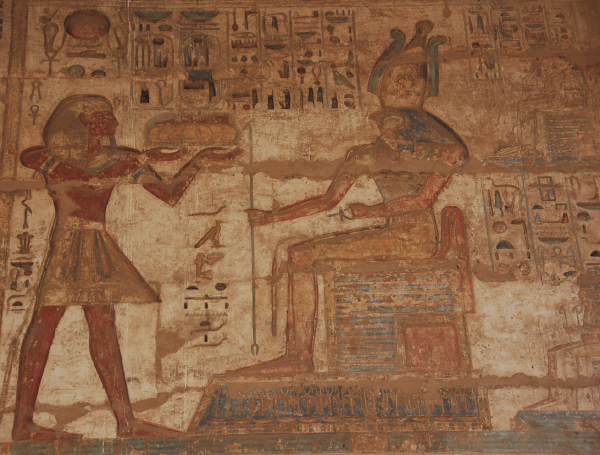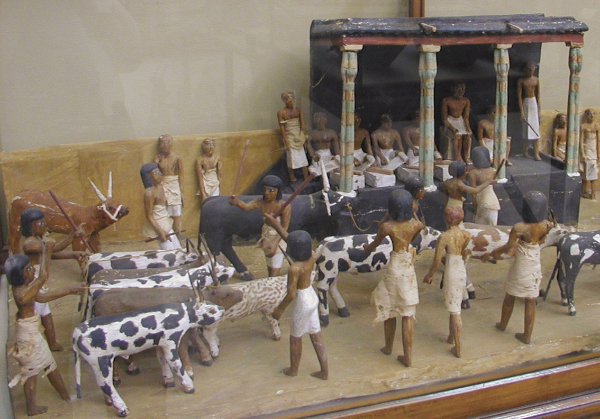The Priests and Levites: Additional Responsibilities and Provisions (18:1–32)
Offenses against the sanctuary (18:1). The priests and Levites provided a layer of security for the nation as a holy and undefiled people and defined its prophetic destiny as God’s people in the midst of a defiled world. Encroachment by any outside or unauthorized person on the holy objects was punishable by death. Priests were also culpable of violating the sanctity of the Holy Place if they allowed an unauthorized person within its defined sacred space. The priests themselves were prohibited from going beyond the veil and entering the Most Holy Place; only the high priest was permitted to enter that sanctum on the Day of Atonement.
Levine defined the phrase “offenses against the sanctuary” and its proper adjudication as “infractions against the purity of the sanctuary. . . . Impurity was viewed as an external force which entered the person or attached itself to him. The primary purpose of expiation was, therefore, to rid one’s self of this foreign force.”137 A Hittite work entitled Instructions to Priests and Temple Officials warns the priests against taking for themselves or their families food or precious objects that belonged to the temple.138 It also indicates the need for diligence in guarding access to sacred space at all times.139
They must not go near (18:3). The full sanctuary of ancient Israel consisted of concentric zones of holiness: (1) The inner tier was the ark of Yahweh in the Most Holy Place, (2) extending outward to the priestly court within the curtains of the Holy Place, (3) then to the realm of the priests and three clans of Levites, (4) moving to the four triads of the tribes of Israel, and then (5) outside the camp of the holy where unclean persons were designated during their term of impurity.140 In the ancient world the temple complex was likewise a sacred zone, presumably with increasing sanctity as one moved toward the center.141 Each zone had its own rules of purity and accessibility. Hints of this can be found throughout the primary sources, but nowhere is there found as highly developed a system as that presented in the Old Testament.
Most holy offerings (18:9). The priestly tribute is divided into two levels of sanctity. The holiest of the offerings, to be consumed only by the priests, were all the people’s dedicated offerings presented at the sanctuary as cereal offerings, plus their sin (purification) and guilt (reparation) offerings (Lev. 4:1–35; 5:14–19; 7:1–10). The cereal grain offering (2:1–13; 6:14–23) was an unleavened mixture of fine flour, oil, and incense. A memorial portion was burned on the altar as a sweet aroma to Yahweh, with the remainder eaten by the Aaronic priests.
The animals offered by individuals as sin or purification offerings were specified according to one’s rank within Israelite society. The guilt or reparation offering, brought because of violating someone’s property or inadvertently breaking a covenant stipulation, usually consisted of a ram (or its equivalent in silver shekels), plus a penalty of one-fifth of the value of the animal (5:14–19; 7:1–10). The sacrificial process included the ritual slaughtering of the animal, the deposition of the drained blood on the altar or its sides, the burning of assigned portions such as the fat and entrails on the large bronze altar, and the setting aside and consumption of priestly portions. In keeping with Leviticus 6:29 and 7:6, only the males among the priests and their families were permitted to consume these most holy of offerings.
Wave offerings (18:11). This mistranslation denotes the elevation offering that is lifted up toward the heavens in presentation and dedication to God and then lowered into the hands of the priest. This practice is evidenced in Egyptian and Mesopotamian ritual offerings pictured on monuments, stelae, and plaques.142 Often the breast or right thigh of the animal was uplifted as a wave offering; it was associated with the peace offering (Lev. 7:30, 34; 23:20), the consecration of the priests (Ex. 29:27; Lev. 8:29), the dedication of the Levites (Num. 8:11–13, 21), and the purification ritual for the Nazirite (Num. 6:20).
In Leviticus 10:15 the thigh of the heave offering and the breast of the elevation offering were ordained as gifts for the Aaronic priesthood. Grain and oil offerings were also presented in such fashion, as with the consecration of the priests (Ex. 29:23–24; Lev. 8:27), cleansing ritual for lepers (Lev. 14:12, 21, 24), and the sheaf of grain and two loaves for the Feast of Weeks (Lev. 23:15, 17). The transference ritual of up and down, forward and backward movement signified that the offering was moving from its temporary owner to its ultimate owner, God.143

Offering being elevated before the deity
Frederick J. Mabie
Firstfruits (18:13). The three plant products specified here were literally the cream of the crop—the very finest of the olive oil, wine, and grain production. These first processed offerings were distinguished from the normal firstfruit offerings of the first ripe olives, grapes, and grain.144 The first yields of what was produced from oil from the olive crushing vats, newly pressed wine, and freshly ground flour were to be returned to Yahweh, the owner and giver of all produce. The quality of the produce was deemed as the best or choicest of the crops. As the fat was not to be consumed of any animal sacrificed or slaughtered for consumption, so the fat of the produce from field, orchard, or vineyard was not to be eaten but devoted to Yahweh.
Later in the history of the Israelite kingdoms, prophets such as Hosea illustrated the nation’s unfaithfulness using the imagery of abused firstfruits of the fig season that went to Baal Peor instead of Yahweh (Hos. 9:10). Offering the firstfruits to deity was standard practice in the ancient Near East.

Details here are from the Funerary Papyrus of Nebqed. The dead man, followed by two women, stands before the god of the dead, Osiris, and presents him with offerings.
Werner Forman Archive/The Louvre
Devoted to the LORD (18:14). The paramount type of offering for Yahweh and the sanctuary was called the ḥērem or “devoted” offering. Anything presented as ḥērem could not be redeemed via payment or substitution. All such material reverted to the priests, whether a field, personal property, animal, or human (Lev. 27:21, 28).145 The totality of the ḥerem of the fields or flocks was granted to the priests, and humans or unclean animals not sacrificed or consumed could be used in the service of the sanctuary.
Firstborn (18:15). The second part of the tribute list for the priests related to firstborn animals and humans brought to the sanctuary for offering or dedication. See sidebar on “The Firstborn Male.”
Covenant of salt (18:19). Salt was the finest preservative in antiquity, and it symbolized permanence and preservation. Salt was probably used in the covenant ceremony in which Israel celebrated its unbreakable covenant with God. Salt that accompanied many Israelite sacrifices was used physically in the seasoning of the elements, but it also contributed to the quality of the covenant relationship between humanity and God (Lev. 2:13).146
In Ezra 4:14 the Sanballatid leaders in Samaria pledged their loyalty to the Persian government with the expression, “We have salted the salt of the palace.”147 With these concepts in mind, the covenant of salt between Yahweh and the Aaronic priesthood emphasized the quality and permanence of the relationship. That relationship was evidenced outwardly through the perpetual statute of the Israelite supplying of tribute to Yahweh, which then provided the means of sustenance for the priests and their families (see also comments on Lev. 2:13).
Tithes (18:21). The concept of tithing is known from ancient Near Eastern sources in the Levant and Mesopotamia. Not only were agricultural goods tithed, but also various commodities such as metals and goods produced by craftsmen. The usage of the Ugaritic mʿ śrt148 evidences a royal temple structure in which contributions to the given sanctuary could be used by the royalty. A kind of royal priesthood is evidenced in the account of Melchizedek in Genesis 14:18–24.
In Babylon of the sixth century B.C., cattle contributed as tithes were branded for the temple treasuries, and other goods were earmarked on storage jars and other receptacles.149 In the Iron II Israelite kingdom period, goods collected for the royal provision were inscribed with the term lmlk (“for the king”). Whether some of these may have been dedicated for the temple stores is unknown, but there is little doubt that some means of identifying the tithed goods was employed during the First Temple period.

Deir al-Bah(a)ri model of livestock count
Gerard Ducher/Wikimedia Commons, courtesy of the Cairo Museum
Grain . . . juice (18:27). These were two key agricultural products to be set aside by the Levites for their tithe: the best grain from the threshing floor and the finest juice from the wine vat. From the painted wall murals of Egypt to the hewn murals of the Hittites in central and eastern Anatolia and the Assyrians of Mesopotamia, the activities and products of grain processing and wine production were esteemed as sacred aspects of human endeavor in utilizing these gifts from the gods. Rites associated with bread and wine held significant places in ancient cultic activities, as they did in ancient Israel. Cultic activities were associated with threshing floors and winepresses, as well as olive presses. In Numbers particular attention is given to the bread, oil, and wine accompaniments to a number of animal sacrifices.150